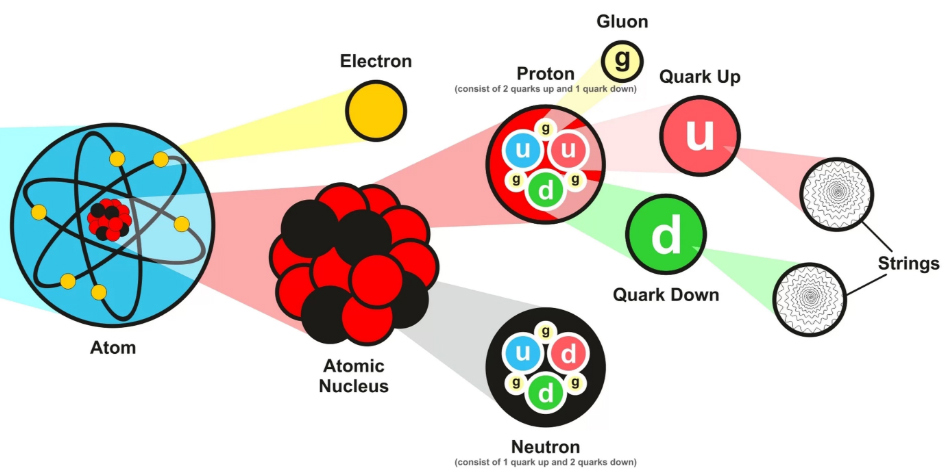Subatomic particles represent the fundamental constituents of matter, occupying a critical position in the tapestry of physical reality. Though often discussed abstractly in popular media, these particles are the very building blocks of the universe, playing an indispensable role in determining the characteristics of all known matter. To comprehend what subatomic particles are made of, one must delve into the layered complexity of particle physics, exploring both the fundamental particles and the forces that interact with them.
At the heart of particle physics lies the Standard Model, a well-established theoretical framework that describes the electromagnetic, weak, and strong nuclear forces alongside a host of elementary particles. Among these are quarks and leptons, which underpin the structure of everything around us. Quarks combine in groups to form protons and neutrons—the nuclei of atoms—while leptons, such as electrons, orbit these nuclei, creating the entirety of atomic structure.
Quarks, the elementary building blocks of baryons (such as protons and neutrons), exist in six distinct flavors: up, down, charm, strange, top, and bottom. They possess fractions of electric charge, specifically +2/3 or -1/3, and are never found independently; instead, they are perpetually confined within larger particles due to the phenomenon known as color confinement, which is a result of the strong force mediated by gluons. Gluons serve a dual role as both carriers of the strong force and as fundamental constituents of the field associated with strong interactions. This phenomenon illustrates the intricate interplay between quarks and gluons, creating a lattice of interactions that confine the quarks in an atom’s nucleus.
Leptons provide another foundational element of matter, comprising six different varieties: the electron, muon, tau, and their corresponding neutrinos. Unlike quarks, leptons do not experience the strong force but are influenced by the weak nuclear force—a vital interaction governing processes such as radioactive decay. Electrons, the most familiar lepton, possess a full negative electric charge and are crucial for chemical bonding and electricity, a testament to their role in structuring matter at a macroscopic scale.
As one explores deeper into the quantum realm, the concept of mass arises, an enigmatic property of subatomic particles primarily attributed to the Higgs mechanism. This mechanism posits that particles acquire mass through their interaction with the Higgs field, permeating all of space. The recent discovery of the Higgs boson—a particle associated with this field—has profound implications for our understanding of mass and the fabric of the universe. The intricate relationship between mass, particle interactions, and the structures formed from these relationships invites a deeper reflection on the nature of existence itself.
The fascination with subatomic particles extends beyond their composition; it evokes questions about the fabric of reality. Why do particles possess mass? What are the implications of their interactions? The more we unveil, the more complex the questions become. For instance, the asymmetry observed in the universe, favoring matter over antimatter, poses a significant conundrum. Understanding this imbalance remains an open challenge for physicists and beckons deeper inquiry into the fundamental laws governing the cosmos.
While quarks and leptons comprise the basic building blocks, it is also crucial to consider the interactions mediated by force carriers. In addition to gluons, other gauge bosons—such as photons, W and Z bosons—play a vital role in fundamental forces. Photons are essential for electromagnetic interactions, while W and Z bosons mediate weak interactions. Understanding these interactions requires an appreciation for the elegant symmetries and laws that govern particle interactions, revealing a profound interconnectedness within the universe.
The exploration of subatomic particles leads us to consider the quantum field theory, a comprehensive framework that melds quantum mechanics and special relativity. Fields exist in a dynamic state, with particle interactions manifesting as fluctuations and excitations across these fields. This perspective challenges traditional notions of particles as discrete entities, inviting contemplation of a more holistic, interconnected view of reality. Accordingly, particle interactions may be perceived as the dance of waves across a multidimensional landscape, providing a richer understanding of the underlying structure of matter.
Moreover, the investigation of subatomic particles has led to innovations such as quantum computing and advanced materials with extraordinary properties. This direct application of abstract concepts not only underscores the potential for progress but also stimulates fascination as humanity stands on the brink of exploring technological frontiers initiated by our understanding of fundamental particles.
Ultimately, the composition of subatomic particles is not simply an isolated inquiry but a gateway into the mysteries of the universe. Engaging with these concepts invites a profound appreciation for the elegance of nature’s design, bridging the gap between the infinitesimal scales of particles and the grand structures of the cosmos. It paints a picture of existence that is at once breathtaking and humbling, propelling us into an era where the allure of the unknown persistently beckons.
In conclusion, the exploration of what subatomic particles are made of highlights an intricate web of relationships and interactions shaping the fabric of the universe. Each discovery serves as a stepping stone, unraveling layers of complexity in our quest for knowledge. As we delve into the quantum realm, we not only reveal the building blocks of matter but also reflect upon our own place within this magnificent cosmic tapestry.












